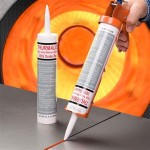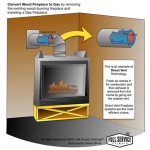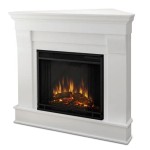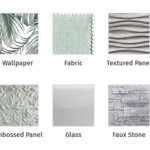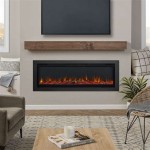Wall Mounted TV Unit Above Fireplace: Considerations and Best Practices
Integrating a wall-mounted television unit above a fireplace has become a popular design choice in contemporary homes. This configuration offers a visually appealing focal point, consolidating entertainment and warmth within a single area. However, successfully executing this design requires careful planning and consideration of several factors to ensure both functionality and safety.
The appeal of this design stems from its space-saving efficiency and modern aesthetic. In smaller living spaces, combining the television and fireplace eliminates the need for separate furniture pieces to house each appliance. Furthermore, a well-designed wall-mounted setup can create a clean, minimalist look that enhances the overall ambiance of the room.
Despite its aesthetic benefits, mounting a television above a fireplace presents potential challenges. Heat from the fireplace can damage the television's sensitive electronic components. Furthermore, the viewing angle may be less than ideal, potentially causing discomfort during extended viewing sessions. These potential downsides necessitate a thorough evaluation of the space and selection of appropriate mounting and heat mitigation strategies.
Key Point 1: Addressing Heat Concerns
The primary concern when mounting a television above a fireplace is the potential for heat damage. Televisions are designed to operate within a specific temperature range, and excessive heat exposure can lead to component failure, shortened lifespan, or even immediate malfunction. The extent of the heat risk depends on the type of fireplace, the distance between the fireplace and the television, and the presence of any heat shielding measures.
Gas fireplaces generally produce less radiant heat than wood-burning fireplaces. The heat generated by a gas fireplace tends to rise directly upwards, making it less likely to directly impact the television. However, even with a gas fireplace, prolonged use can still generate sufficient heat to pose a risk. Wood-burning fireplaces, on the other hand, produce significantly more heat and require more robust heat mitigation strategies.
Several methods can be employed to minimize heat exposure. One approach is to increase the distance between the fireplace and the television. A higher mantelpiece can act as a buffer, deflecting heat away from the television. The mantelpiece should ideally be wide enough to extend beyond the sides of the fireplace opening, further minimizing radiant heat exposure.
Installing a heat shield is another effective method. A heat shield is a physical barrier that deflects heat away from the television. These shields can be constructed from various materials, including metal or heat-resistant boards. The shield should be securely mounted and positioned to effectively block the upward flow of heat. Some commercially available mantelpieces are designed with integrated heat shields.
Another preventative measure involves monitoring the temperature above the fireplace. A simple thermometer placed above the mantel can provide a real-time indication of the temperature. If the temperature consistently exceeds the television manufacturer's recommended operating range, adjustments to the fireplace usage or additional heat mitigation strategies may be necessary.
Furthermore, ensuring proper ventilation is crucial. Adequate airflow around the television can help dissipate heat and prevent it from building up. Avoid enclosing the television in a tight cabinet or recess without proper ventilation openings. Consider installing ventilation fans or strategically placed vents to promote airflow.
Key Point 2: Optimizing Viewing Angle and Ergonomics
Beyond heat concerns, the ergonomics of the viewing experience must be considered. Mounting a television too high can lead to neck strain and discomfort, particularly during extended viewing sessions. The ideal viewing angle places the center of the screen at or slightly below eye level when seated.
Determining the optimal viewing height involves considering the typical seating arrangement in the room. Measure the height of the seating area and calculate the corresponding eye level. The television should be mounted so that the center of the screen aligns with or is slightly below this height. This may require adjusting the height of the mantelpiece or using a tilting mount to angle the television downwards.
Tilting mounts offer a flexible solution for optimizing the viewing angle. These mounts allow the television to be tilted downwards, compensating for the increased height above the fireplace. A slight downward tilt can significantly improve viewing comfort and reduce neck strain. When selecting a tilting mount, ensure that it is compatible with the size and weight of the television.
Adjustable mounts provide even greater flexibility. These mounts allow the television to be moved both vertically and horizontally, providing optimal viewing angles from various positions in the room. Adjustable mounts are particularly useful in rooms with multiple seating areas or when the viewing distance varies significantly.
The viewing distance also plays a role in determining the appropriate screen size. A larger screen may be necessary for greater viewing distances, while a smaller screen may suffice for closer viewing. Online calculators and guides can assist in determining the optimal screen size based on the viewing distance.
Careful consideration should also be given to the placement of speakers. Ideally, the speakers should be positioned at ear level for optimal audio quality. If the television is mounted high above the fireplace, consider using a soundbar or separate speaker system that can be positioned at a more appropriate height.
Key Point 3: Installation and Cable Management
Proper installation is essential for both the safety and aesthetic appeal of a wall-mounted television unit above a fireplace. The mounting process should be performed by a qualified professional or by someone with sufficient experience and knowledge of electrical and construction techniques.
Before beginning the installation, ensure that the wall is structurally sound and capable of supporting the weight of the television and mounting hardware. Use a stud finder to locate wall studs and secure the mounting bracket to the studs whenever possible. If studs are not available, use appropriate wall anchors that are designed to support heavy loads.
Cable management is crucial for creating a clean and organized look. Electrical outlets and cable connections should be strategically positioned behind the television to minimize visible wires. Consider running the cables through the wall using a cable management system. These systems typically consist of a conduit or channel that conceals the cables and keeps them out of sight.
Recessed outlets provide a neat and unobtrusive way to connect the television to the power supply. These outlets are installed flush with the wall and can be covered with a decorative plate. Surge protectors are recommended to protect the television from power surges and voltage fluctuations.
When running cables through the wall, ensure that they are appropriately rated for in-wall use. Use plenum-rated cables, which are designed to resist the spread of fire and smoke. Follow all applicable electrical codes and safety regulations.
Consider the accessibility of the cables for future maintenance or upgrades. Leave sufficient slack in the cables to allow for adjustments or repairs. Label each cable to facilitate identification and troubleshooting.
After the installation is complete, thoroughly test the television and all connected devices to ensure that they are functioning properly. Verify that the viewing angle is comfortable and that the sound quality is satisfactory. Address any issues or concerns before completing the project.
Finally, periodically inspect the mounting hardware and cables to ensure that they are secure and in good condition. Tighten any loose screws or fasteners and replace any damaged cables. Regular maintenance will help ensure the long-term safety and functionality of the wall-mounted television unit above the fireplace.
By carefully considering the factors outlined above, it is possible to successfully integrate a wall-mounted television unit above a fireplace, creating a stylish and functional focal point in the home. Proper planning, heat mitigation strategies, ergonomic considerations, and professional installation are essential for achieving a safe and enjoyable viewing experience.

Can I Mount My Tv Above The Fireplace

Can I Mount My Tv Above The Fireplace

Everything You Need To Know About Tv Mounts For Fireplaces

ᑕ❶ᑐ What To Consider Before Mounting A Tv Above Fireplace

Safely Mount A Tv Above An Electric Fireplace Touchstone Home S Inc

ᑕ❶ᑐ What To Consider Before Mounting A Tv Above Fireplace

ᑕ❶ᑐ What To Consider Before Mounting A Tv Above Fireplace

Putting A Tv Above Your Mantel Summer Adams

Stop Hanging Your Television Over Fireplace

Tv Above Fireplace Design Ideas
Related Posts

